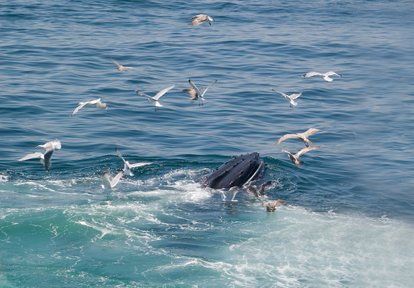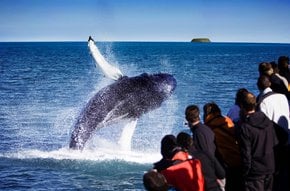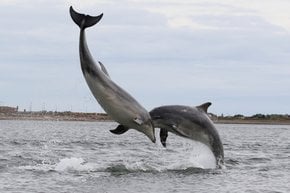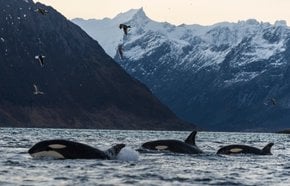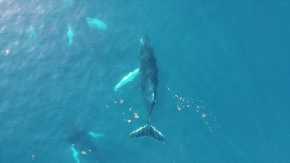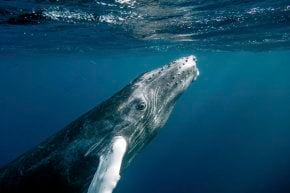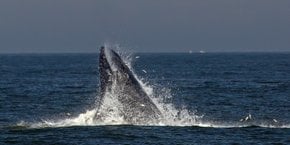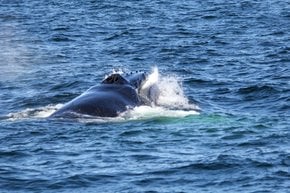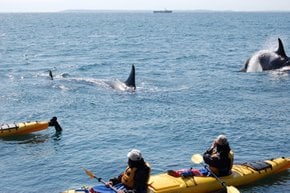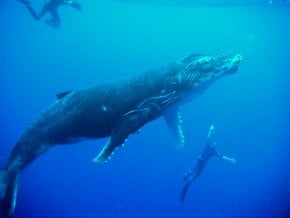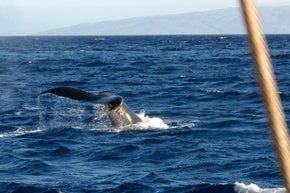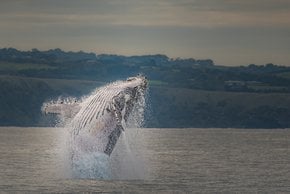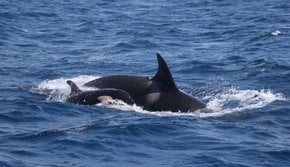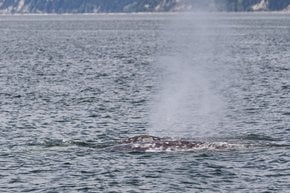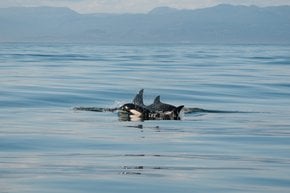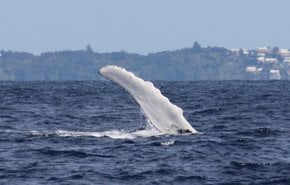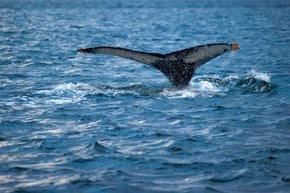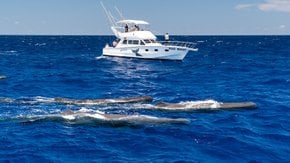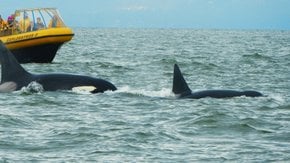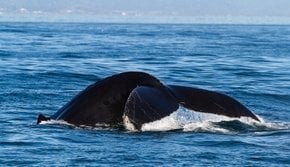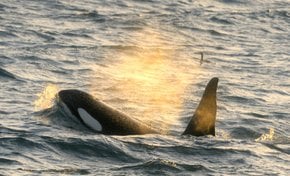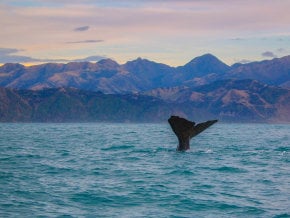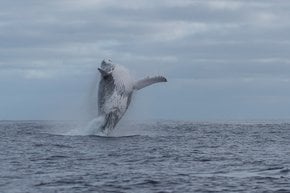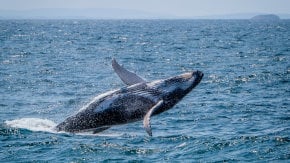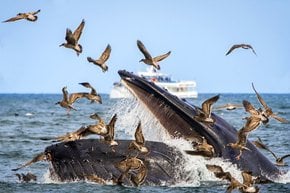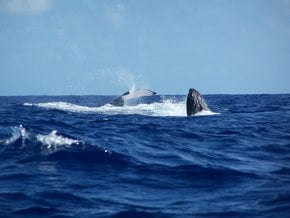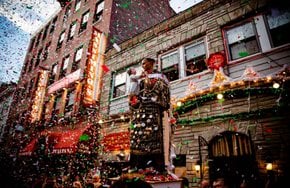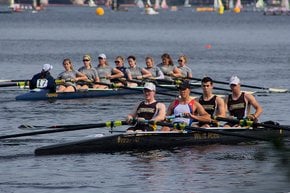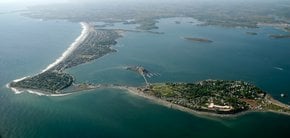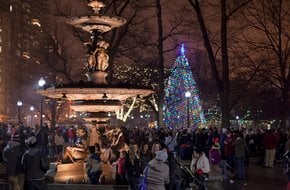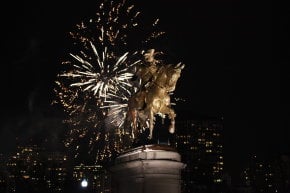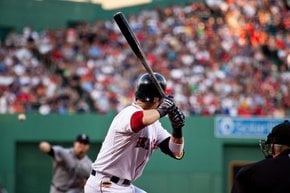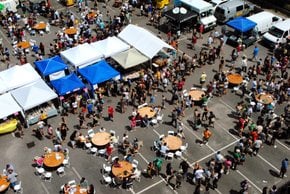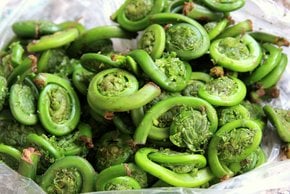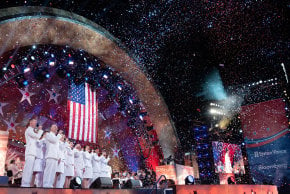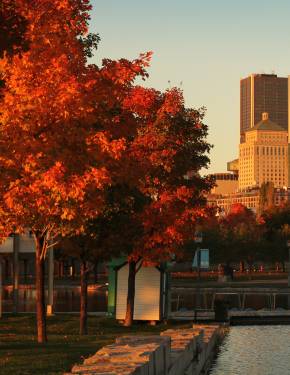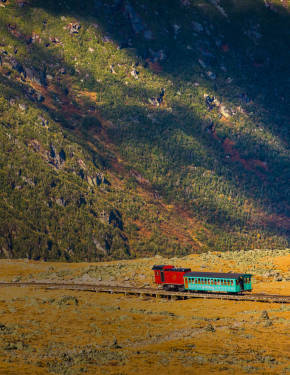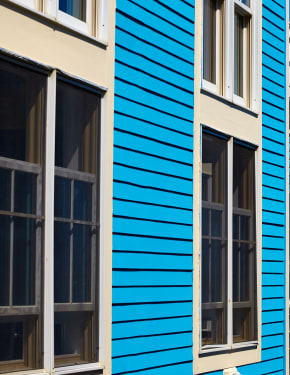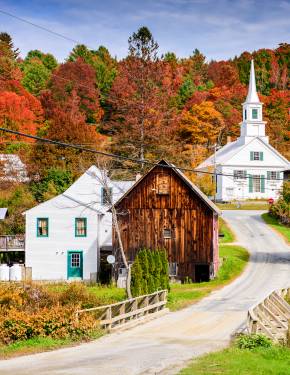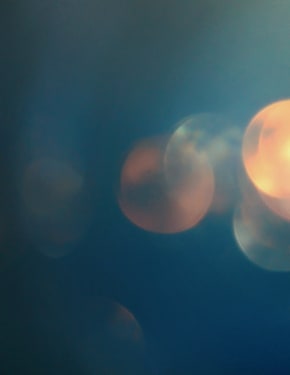Whale Watching in Boston 2026
Cruising in Boston Harbor is even more enjoyable when your companions are whales, dolphins, and seabirds
Best time: April–October
Massachusetts Bay is one of the best places on the planet to encounter whales. In just a one-hour trip into the ocean, one can see humpbacks, minkes, and fins, along with pods of white-sided dolphins that come here to feast on small fish, plankton, and krill. The large sea mammals migrate to New England for the warmer time of the year and can be spotted from spring into the fall months.
Best place for whale watching
Most whale-watching cruises head to Stellwagen Bank National Marine Sanctuary, one of the biggest feeding grounds for whales. This underwater 19-mi (31-km) plateau attracts over 100 fish species, including the Atlantic cod, bass, blue-fin, and yellow-fin tuna, and even the great white shark. In the summer, it is home and nursing territory for several whale species. The sanctuary, which occupies the area of 842 sq. mi (2181 sq. km), is located 25 mi (40 km) east of Boston.
Whale-watching tours in Boston Harbor
Regular whale-watching tours operate out of Boston Harbor from April through October. The New England Aquarium, together with Boston Harbor City Cruises, operates whale-watching excursions with guaranteed sightings. During high season, cruises depart from Long Wharf in Boston at 9 am, 1:30 pm, 2:30 pm, and 3:30 pm. The tour lasts 3-4 hours. The boats go about (22 mi (35 km) off shore to Stellwagen Bank. The harbor operates large catamarans that have the capacity to board up to 400 passengers and travel at speeds of 35 knots (37.5 mph). The vessel has restrooms, a full bar, and a galley with food and drinks. Three outside decks are available for the best views, as well as a climate-controlled cabin with cushioned seating, tables, and screens. Tickets are $70 for adults, $50 for children (3-12), $5 for children under 3, and $62 for seniors. Visitors can buy tickets through Boston Harbor Cruises or at the New England Aquarium Whale Watch booth. There are also many whale-watching tour operators in Massachusetts, located north and south of Boston
Whale-watching season
Whales start to migrate to New England water as early as March and leave in late November. However, regular whale-watching tours in Boston run from April into October. During the summer months, the harbor runs four tours per day. In spring and fall, only two excursions per day are offered. Sunset cruises are available from mid-June to early September.
Humpback whales
Humpbacks are the most frequently spotted whales off the Massachusetts coast. The sightings for these species reach over 90% on whale-watching tours. Being quite large in length (55 ft or 16 m), humpbacks are quite playful leaping out of the water, and putting on a show. Humpbacks usually spend winter close to Galapagos Islands in Ecuador. These whales have patterns on their flukes that are absolutely unique to each individual. Stellwagen Marine Sanctuary has been tracking 50 humpback whales for years to study and learn about their behavior.
Fin whales
Fin Whales are also quite common in Massachusetts. Being the second largest animal on earth, these gentle giants have a body length of 85 ft (25 m). They prefer cooler temperatures and can be spotted during fall months. Fin whales are rather shy so it's not easy to get a glimpse of them. They have unique asymmetrical body color and patterns on a fin's right side. In the winter fin whales travel to the Caribbean, the Gulf of Mexico, and Bahamas.
Minke whales
One of the smaller whales, minke is reaching 30 ft (9 m) in length. Minke whales are quite common and are seen on 75% of the Boston Harbor trips. Minke are usually spotted in the choppy waves weather. They can be identified by two white stripes on their pectoral fins called “Minke mittens”.
North Atlantic right whales
Right whales are very rare in Massachusetts as they are among the most endangered sea mammals in the worl. North Atlantic right whale population is about 300 individuals. You will be really lucky to see one of these amazing creatures. Right whales live up to 70 years and reach 52 ft (16 m) in length. They have a black body, and white patches on the head, but are missing a dorsal fin.
Whale-watching tips
Time of day and weather have don't make a huge difference on a whale-watching trip. However, a tour can get canceled in case of a storm or really bad weather. Even when it's raining, whales come to the surface to breathe so it's possible;le to see them. However, foggy weather could make your excursion less pleasant. In the morning, the sea is calmer which generally gives a better chance to spot mammals. In the afternoon you can get better lighting for your photos, especially during the sunset. If you plan to use any internet-depending gadgets on your trip, keep in mind that the signal gets really weak off shore.
What to bring with you
Binoculars or a camera with a good zoom will definitely come in handy to help get a better whale-watching experience. Also, sunglasses, sunhat and sunscreen can be useful, especially if you travel around midday. You can pack some water and snacks, however, you can also buy food from a snack bar on the boat. You might want to bring cash for snacks, though, because credit card terminals depend on the internet, and if the signal is weak, the payment doesn't go through.
What to wear
It might be quite warm in Boston, but once you get 35 km (22 mi) off shore, it gets chilly and windy too. So it's advised to take a jacket or a warm sweater on your whale-watching trip. Shoes with rubber soles and closed toes is a must. Do not wear flip-flops. The boats are quite large and stable so they rarely provoke motion sickness. However, if you suffer from seasickness, make sure to bring some medicine just in case.

